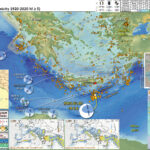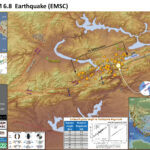Well, last weekend I was working on a house, so did not have the time to write this up until now. (2023 update: the magnitude is now M 6.5) https://earthquake.usgs.gov/earthquakes/eventpage/us700098qd/executive The eastern Mediterranean Sea region is dominated by plate tectonics…
Earthquake Report: East Anatolia fault zone
This M 6.7 earthquake was the result of slip probably along a left-lateral strike-slip fault associated with the East Anatolia fault zone (EAF). The event was shallow and produced strong ground shaking in the region. https://earthquake.usgs.gov/earthquakes/eventpage/us60007ewc/executive As I write this,…


